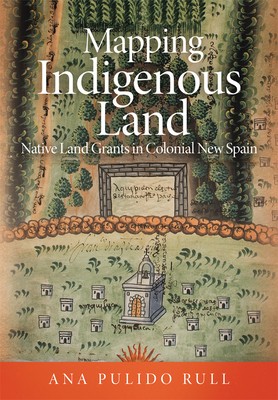
- We will send in 10–14 business days.
- Author: Ana Pulido Rull
- Publisher: University of Oklahoma Press
- ISBN-10: 0806164964
- ISBN-13: 9780806164960
- Format: 19.3 x 25.9 x 2.3 cm, hardcover
- Language: English
- SAVE -10% with code: EXTRA
Reviews
Description
Between 1536 and 1601, at the request of the colonial administration of New Spain, indigenous artists crafted more than two hundred maps to be used as evidence in litigation over the allocation of land. These land grant maps, or mapas de mercedes de tierras, recorded the boundaries of cities, provinces, towns, and places; they made note of markers and ownership, and, at times, the extent and measurement of each field in a territory, along with the names of those who worked it. With their corresponding case files, these maps tell the stories of hundreds of natives and Spaniards who engaged in legal proceedings either to request land, to oppose a petition, or to negotiate its terms. Mapping Indigenous Land explores how, as persuasive and rhetorical images, these maps did more than simply record the disputed territories for lawsuits. They also enabled indigenous communities--and sometimes Spanish petitioners--to translate their ideas about contested spaces into visual form; offered arguments for the defense of these spaces; and in some cases even helped protect indigenous land against harmful requests. Drawing on her own paleography and transcription of case files, author Ana Pulido Rull shows how much these maps can tell us about the artists who participated in the lawsuits and about indigenous views of the contested lands. Considering the mapas de mercedes de tierras as sites of cross-cultural communication between natives and Spaniards, Pulido Rull also offers an analysis of medieval and modern Castilian law, its application in colonial New Spain, and the possibilities for empowerment it opened for the native population. An important contribution to the literature on Mexico's indigenous cartography and colonial art, Pulido Rull's work suggests new ways of understanding how colonial space itself was contested, negotiated, and defined.
EXTRA 10 % discount with code: EXTRA
The promotion ends in 18d.21:04:22
The discount code is valid when purchasing from 10 €. Discounts do not stack.
- Author: Ana Pulido Rull
- Publisher: University of Oklahoma Press
- ISBN-10: 0806164964
- ISBN-13: 9780806164960
- Format: 19.3 x 25.9 x 2.3 cm, hardcover
- Language: English English
Between 1536 and 1601, at the request of the colonial administration of New Spain, indigenous artists crafted more than two hundred maps to be used as evidence in litigation over the allocation of land. These land grant maps, or mapas de mercedes de tierras, recorded the boundaries of cities, provinces, towns, and places; they made note of markers and ownership, and, at times, the extent and measurement of each field in a territory, along with the names of those who worked it. With their corresponding case files, these maps tell the stories of hundreds of natives and Spaniards who engaged in legal proceedings either to request land, to oppose a petition, or to negotiate its terms. Mapping Indigenous Land explores how, as persuasive and rhetorical images, these maps did more than simply record the disputed territories for lawsuits. They also enabled indigenous communities--and sometimes Spanish petitioners--to translate their ideas about contested spaces into visual form; offered arguments for the defense of these spaces; and in some cases even helped protect indigenous land against harmful requests. Drawing on her own paleography and transcription of case files, author Ana Pulido Rull shows how much these maps can tell us about the artists who participated in the lawsuits and about indigenous views of the contested lands. Considering the mapas de mercedes de tierras as sites of cross-cultural communication between natives and Spaniards, Pulido Rull also offers an analysis of medieval and modern Castilian law, its application in colonial New Spain, and the possibilities for empowerment it opened for the native population. An important contribution to the literature on Mexico's indigenous cartography and colonial art, Pulido Rull's work suggests new ways of understanding how colonial space itself was contested, negotiated, and defined.


Reviews